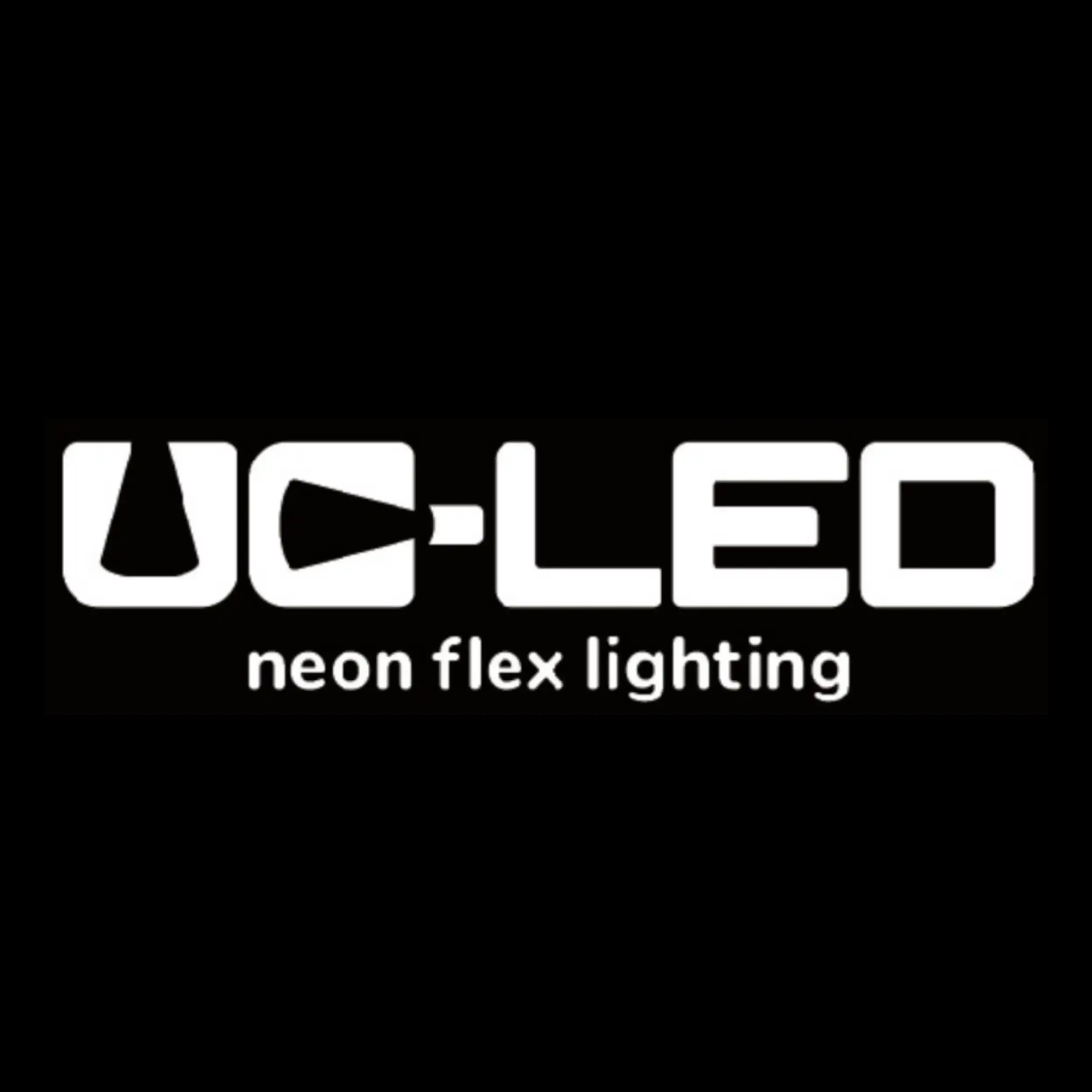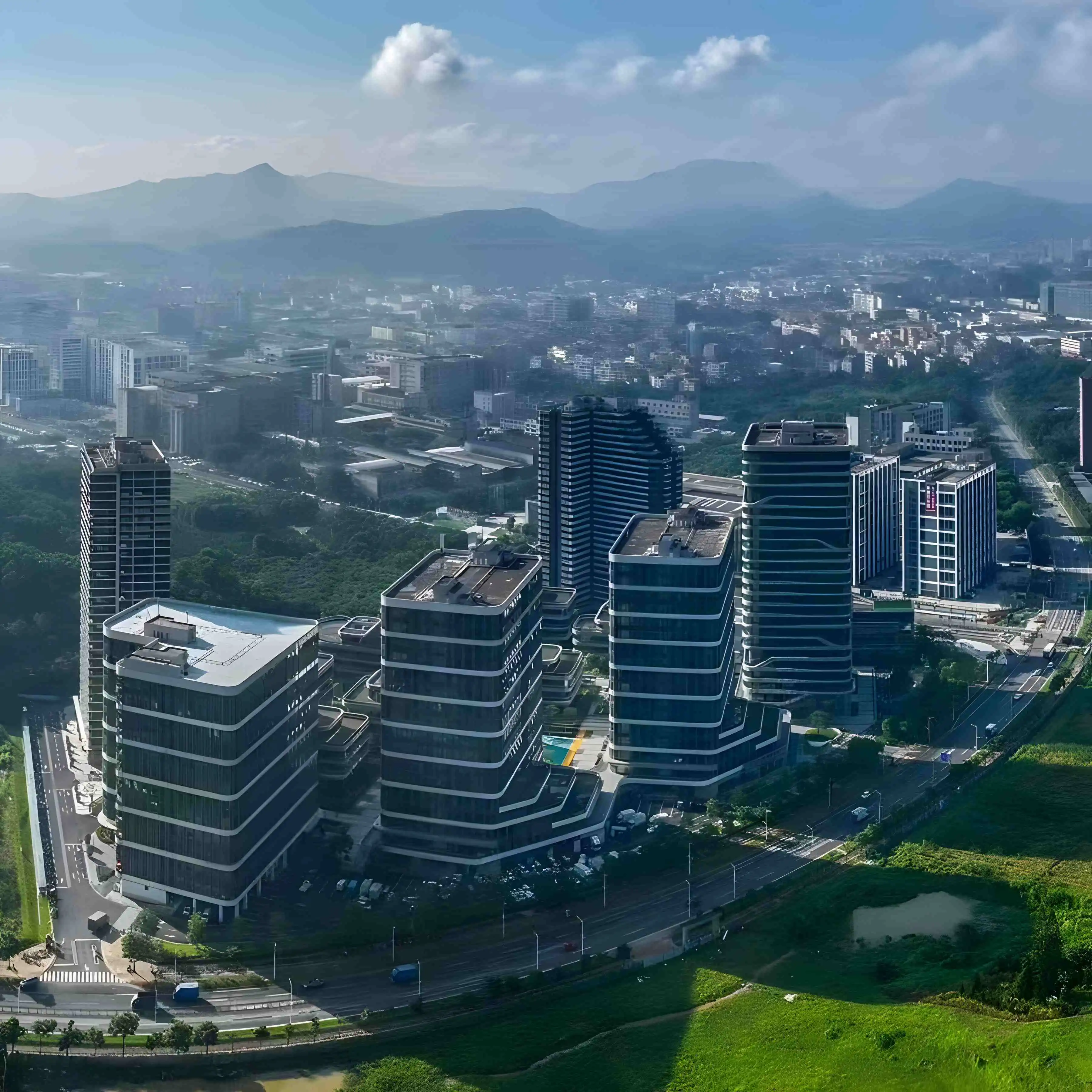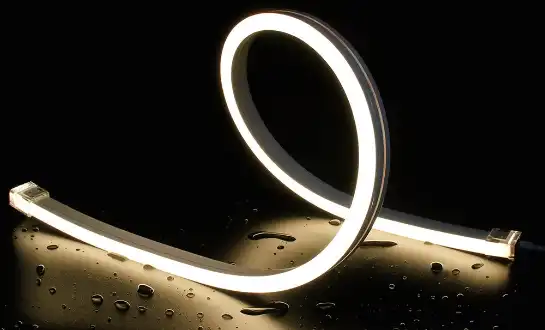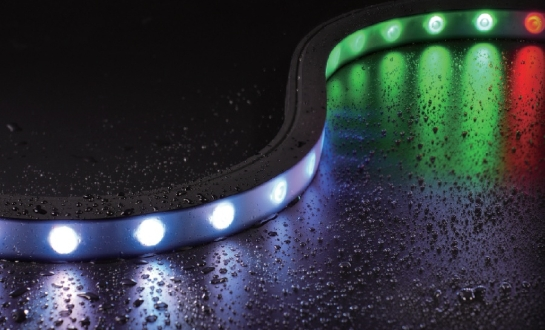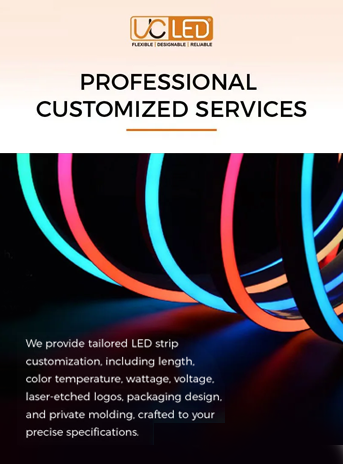Introducing Beam Angles in Flexible LED Wall Washers
Beam angle is a crucial aspect of lighting design, especially when it comes to flexible LED wall washers. It refers to the spread of light emitted from the fixture, measured in degrees. This angle determines how wide or narrow the light distribution will be on the surface it illuminates.
Flexible LED wall washers are designed to provide uniform illumination across vertical surfaces, creating a "washing" effect that enhances architectural features and adds depth to spaces. The flexibility in beam angles allows for precise control over the lighting outcome, making these fixtures highly versatile for various applications.
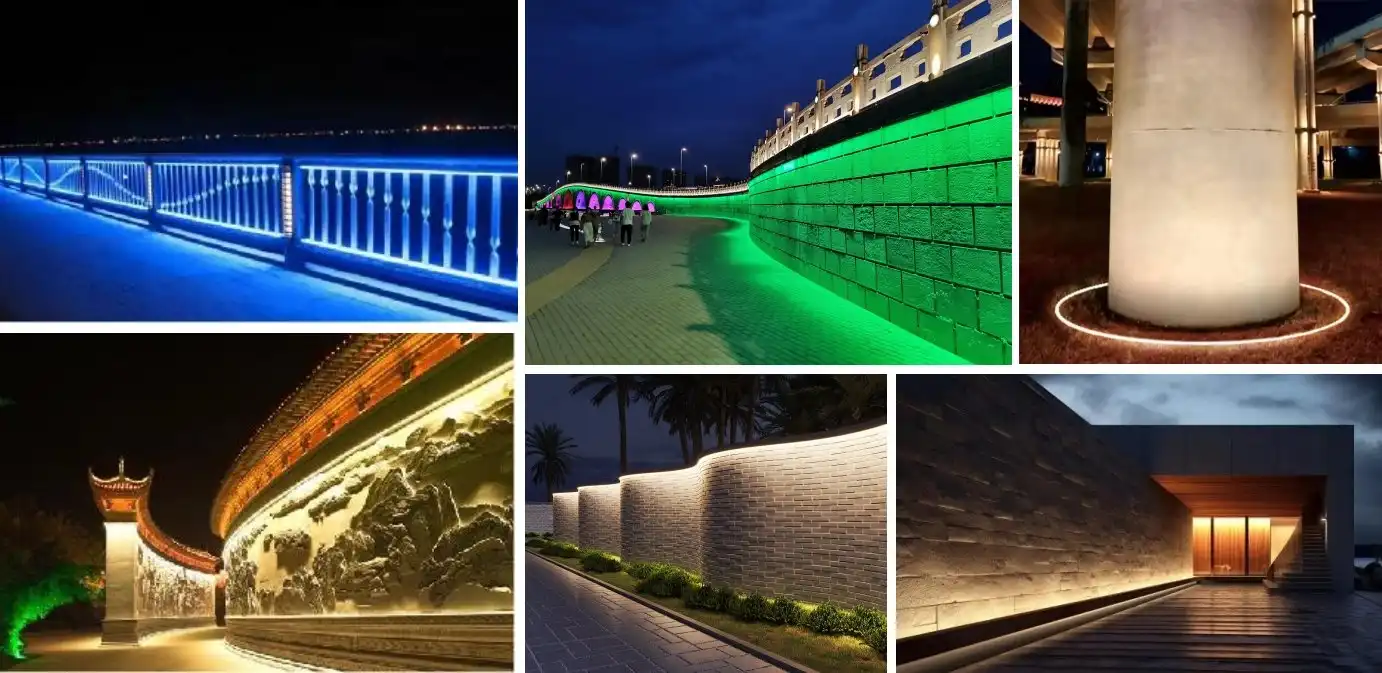
Narrow Beam Angles (15° - 30°)
Narrow beam angles are ideal for accentuating specific architectural elements or creating dramatic lighting effects that draw the eye to key features. They produce a concentrated, focused beam of light, making them perfect for highlighting textures, artwork, columns, or intricate architectural details. In outdoor settings, narrow beams can illuminate tall buildings, monuments, or sculptures from a distance, creating striking visual impact. Their precision allows designers to control light spill and direct illumination exactly where it is needed, making them an excellent choice for theatrical, artistic, or feature-specific lighting applications.
Medium Beam Angles (45° - 60°)
Medium beam angles offer a balanced approach between focused and wide-spread illumination, providing versatility for a variety of applications. They deliver sufficient coverage for most wall-washing or accent lighting tasks while maintaining control over light distribution. These beam angles are commonly used in retail environments, galleries, museums, and residential spaces, where they help create an inviting and comfortable ambiance. Medium beams can highlight textures or displays without overwhelming the space, offering flexibility to enhance both architectural features and functional areas while ensuring aesthetically pleasing and evenly distributed illumination.
Wide Beam Angles (90° - 120°)
Wide beam angles are perfect for achieving uniform, expansive illumination across large surfaces. They are particularly effective for washing entire walls, building facades, or large outdoor areas, creating a sense of spaciousness, openness, and visual cohesion. In commercial and public spaces, wide beams help eliminate shadows, improve visibility, and provide consistent light for displays, workspaces, or architectural highlights. Their broad coverage ensures that large-scale features are evenly lit, enhancing aesthetic appeal while maintaining energy efficiency and minimizing the need for multiple lighting fixtures to achieve comprehensive illumination across expansive surfaces.
Factors Influencing Beam Angle Selection
Choosing the right beam angle for your flexible LED wall washer is crucial for achieving the desired lighting effect. Several factors come into play when making this decision:
Wall Height and Distance
The height of the wall and the distance between the wall and the light fixture are critical factors in selecting the appropriate beam angle. Taller walls or fixtures mounted farther from the surface may require narrower beam angles to ensure that light reaches the top evenly and maintains the intended focus. Conversely, shorter walls or fixtures placed closer to the surface may benefit from wider beam angles to achieve uniform illumination across the entire area. Properly considering these spatial parameters ensures efficient light distribution, prevents hotspots or uneven brightness, and enhances the visual impact of architectural or decorative elements.
Desired Coverage Area
The area you wish to illuminate directly influences the choice of beam angle. Narrower beam angles are ideal for highlighting specific architectural features, artwork, or creating focused light pools that draw attention to key elements. In contrast, wider beam angles are better suited for evenly lighting large surfaces or spaces where uniform illumination is desired. By matching the beam angle to the intended coverage area, designers can achieve the desired visual effect, enhance the overall aesthetic, and ensure that both focal points and background areas are appropriately lit, maximizing both functionality and visual appeal.
Architectural Features
Architectural elements such as textured surfaces, recesses, or protruding features require careful consideration when selecting beam angles. Irregular surfaces can create shadows or uneven light distribution if the wrong angle is used. In many cases, a combination of narrow and wide beam angles may be necessary to highlight details while maintaining overall balance. Proper planning ensures that each architectural feature receives the right amount of illumination, enhancing the design intent. Understanding the space’s geometry and surface characteristics allows designers to strategically place fixtures and choose beam angles that complement the architecture while achieving visually pleasing, consistent lighting results.
Ambient Light Conditions
Architectural elements such as textured surfaces, recesses, or protruding features require careful consideration when selecting beam angles. Irregular surfaces can create shadows or uneven light distribution if the wrong angle is used. In many cases, a combination of narrow and wide beam angles may be necessary to highlight details while maintaining overall balance. Proper planning ensures that each architectural feature receives the right amount of illumination, enhancing the design intent. Understanding the space’s geometry and surface characteristics allows designers to strategically place fixtures and choose beam angles that complement the architecture while achieving visually pleasing, consistent lighting results.

Customization and Flexibility in Beam Angle Options
While standard beam angles are widely available, the lighting industry has seen a growing trend towards customization. Many manufacturers now offer flexible LED wall washers with adjustable or customizable beam angles to meet specific project requirements.
Adjustable Beam Angle Solutions
Some advanced flexible LED wall washers feature adjustable optics or lenses that allow the beam angle to be modified on-site. This capability provides lighting designers with unparalleled flexibility, as they can fine-tune illumination angles to suit the specific dimensions, textures, and features of the space. Adjustable beam angles eliminate the need to replace fixtures if project requirements change, saving time and reducing costs. This adaptability makes it easier to achieve precise lighting effects, balance ambient and accent lighting, and ensure uniform coverage. Designers can respond dynamically to unforeseen challenges while maintaining the intended visual and functional outcomes of the installation.
Custom Beam Angle Manufacturing
For projects with unique or highly specific lighting requirements, some manufacturers provide custom beam angle solutions. This approach ensures that the lighting system is precisely tailored to the architectural design, surface geometry, or particular functional needs of the project. Custom beam angles can accommodate irregular building facades, specialized artwork, or complex indoor layouts, delivering optimal illumination and highlighting critical elements. By working closely with manufacturers, designers can specify the exact beam spread, intensity, and focus required, achieving a seamless integration between the lighting solution and the overall design vision, while ensuring long-term performance, efficiency, and visual impact.
Multi-Beam Angle Fixtures
Innovative designs in flexible LED wall washers now include fixtures that incorporate multiple beam angles within a single unit. These versatile systems allow dynamic lighting effects, providing both focused and wide coverage without the need for multiple fixtures. Multi-beam solutions enable designers to adapt illumination to varying architectural features, room layouts, or outdoor structures, creating layered, visually rich environments. This flexibility simplifies installation, reduces the number of required fixtures, and allows for on-the-fly adjustments to suit changing design goals or ambient conditions. Multi-beam fixtures offer a practical, efficient, and creative solution for achieving complex, high-impact lighting designs.
Conclusion
The availability of various beam angles for flexible LED wall washers provides lighting designers and architects with a powerful tool to create stunning visual effects and enhance architectural spaces. From narrow beams that highlight specific features to wide angles that bathe entire walls in light, the options are diverse and customizable. When selecting a flexible LED wall washer supplier or manufacturer, it's crucial to consider their range of beam angle options and their ability to provide customized solutions. By choosing a reputable manufacturer with a wide product range and customization capabilities, you can ensure that your lighting project achieves the perfect balance of functionality and aesthetic appeal.

FAQ
Can I change the beam angle of my flexible LED wall washer after installation?
It depends on the specific product. Some advanced models offer adjustable optics, while others may require lens replacement. Check with the manufacturer for options.
How do I determine the right beam angle for my project?
Consider factors like wall height, desired coverage area, and lighting effect. Consulting with a lighting designer or the manufacturer can help you make the best choice.
Are custom beam angles more expensive?
Custom options may come at a premium, but they can provide optimal results for unique projects, potentially saving costs in the long run by reducing the number of fixtures needed.
Experience Premium Flexible LED Wall Washers with Customizable Beam Angles | QUAN HE
QUAN HE Lighting Co., Ltd., established in 2015, is a leading manufacturer of premium linear lighting products, including flexible LED wall washers. With our state-of-the-art 5,000m² factory and expert R&D team, we offer customizable beam angle solutions to meet your specific project needs. Our ISO-certified manufacturing process and UL, CE, and ROHS certifications ensure high-quality, reliable products. For tailored lighting solutions from a trusted flexible LED wall washer factory and manufacturer, contact us at Linda@uc-led.com.

source: LED Light
References
1. Johnson, A. (2022). "Architectural Lighting Design: Principles and Applications." Illumination Press.
2. Smith, R. et al. (2021). "Advancements in LED Wall Washing Technology." Journal of Lighting Engineering, 15(3), 78-92.
3. Thompson, L. (2023). "The Impact of Beam Angles on Energy Efficiency in Commercial Lighting." Sustainable Lighting Quarterly, 8(2), 45-58.
4. Garcia, M. and Lee, S. (2022). "Customizable Optics in Modern LED Fixtures: A Case Study." Proceedings of the International Lighting Symposium, 112-125.
5. White, D. (2023). "Innovative Approaches to Facade Illumination Using Flexible LED Technology." Architectural Lighting Review, 29(4), 67-82.
